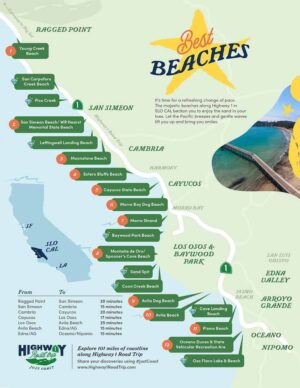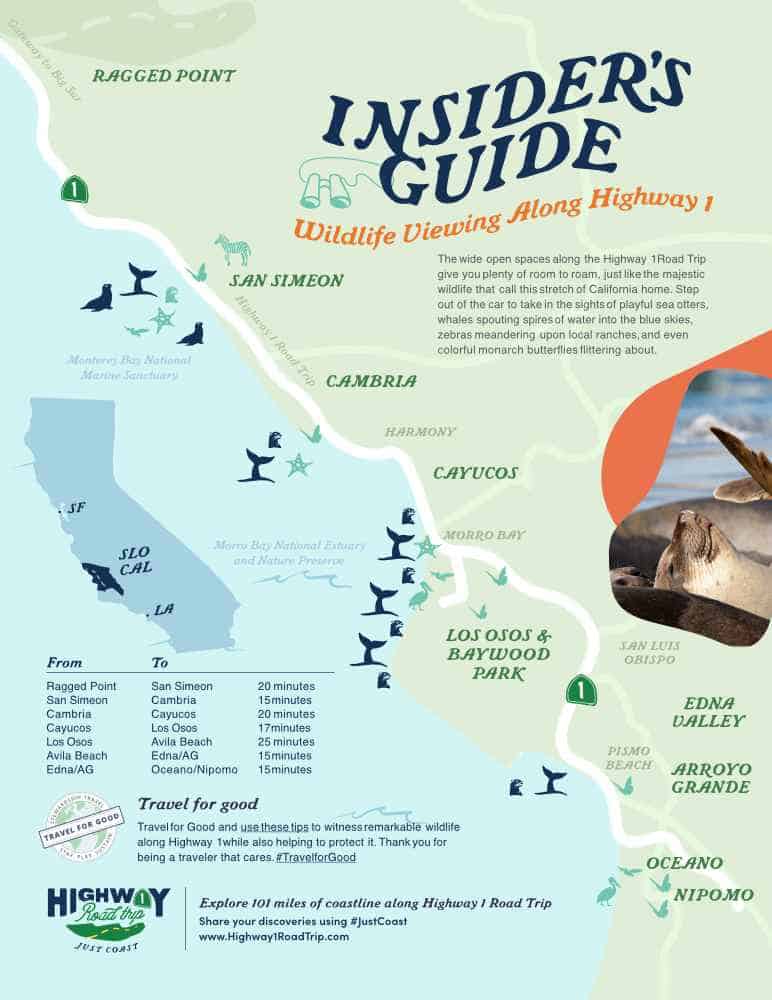Elephant Seal Overview
The Piedras Blancas Elephant Seal Rookery lets visitors observe Elephant Seals up close and in their element. Find these magnificent marine mammals on the beach, just off Highway 1. Located along a beautiful stretch of coastline, the rookery is easily accessible, free, and open to the public all year-round.
What: Elephant Seal Viewing
When: Year-round, best times are late January, late April and late October
Reservation Needed: No
History of the Elephant Seal Rookery
The history of the Piedras Blancas Elephant Seal Rookery is inextricably linked to the dramatic rise and fall of the Northern Elephant Seal Population. Starting in the 1700s, the Pacific Northwest maritime fur trade over-hunted all species of marine animals, including Elephant Seals, Sea Otters and Whales. Prized for their oil-rich blubber—often used in lamps and lubrication—Elephant Seals were hunted to near extinction. In fact, by the year 1990, the Northern Elephant seal were believed to be totally extinct. Thankfully, in 1922, Mexico granted Elephant Seals protected status (the United States soon followed, allowing these majestic creatures to repopulate in peace). Elephant Seals soon found a home among California’s coastal islands, including the Channel Islands, Año Nuevo Island (north of Santa Cruz) and the Farallon Islands off the coast of San Francisco.
When did the Elephant Seals come to San Simeon, specifically? In 1990, the creatures were observed arriving on the beaches south of San Simeon’s historic Piedras Blancas Lighthouse. By 1996, the number of Northern Elephant Seal pups soared to nearly 1,000 and the colony stretched southward and northward to beaches adjacent to Highway 1. Friends of the Elephant Seal, which was formed in 1997 with the aim of increasing both wildlife public safety and respect for the local Elephant Seals, got to work. Their goal was simple: To create a viewing space that would allow visitors to observe the marine mammals from a safe distance. Today, docents continue to answer questions and help visitors get the most from their viewing experience.
Why do the Elephant Seals come to San Simeon, year after year? During the pupping and breeding season, Elephant Seals usually return to the same beaches where they were born. As more pups are born every year, the colony continues to grow. In recent years, more than 25,000 Elephant Seals have arrived along a pristine, 8-mile stretch of coastline north and south of Point Piedras Blancas, and the colony continues to expand along the sand. Over the years, improvements at the rookery’s viewing areas have continued to attract worldwide visitorship. Now featuring boardwalk overlooks built by the California Conservation Corps (with support from the California Coastal Conservancy), interpretive signs provided by California State Parks, and handicapped parking lot upgrades and access provided by the California Department of Transportation, everyone is welcome to enjoy San Simeon’s famous Elephant Seal population.
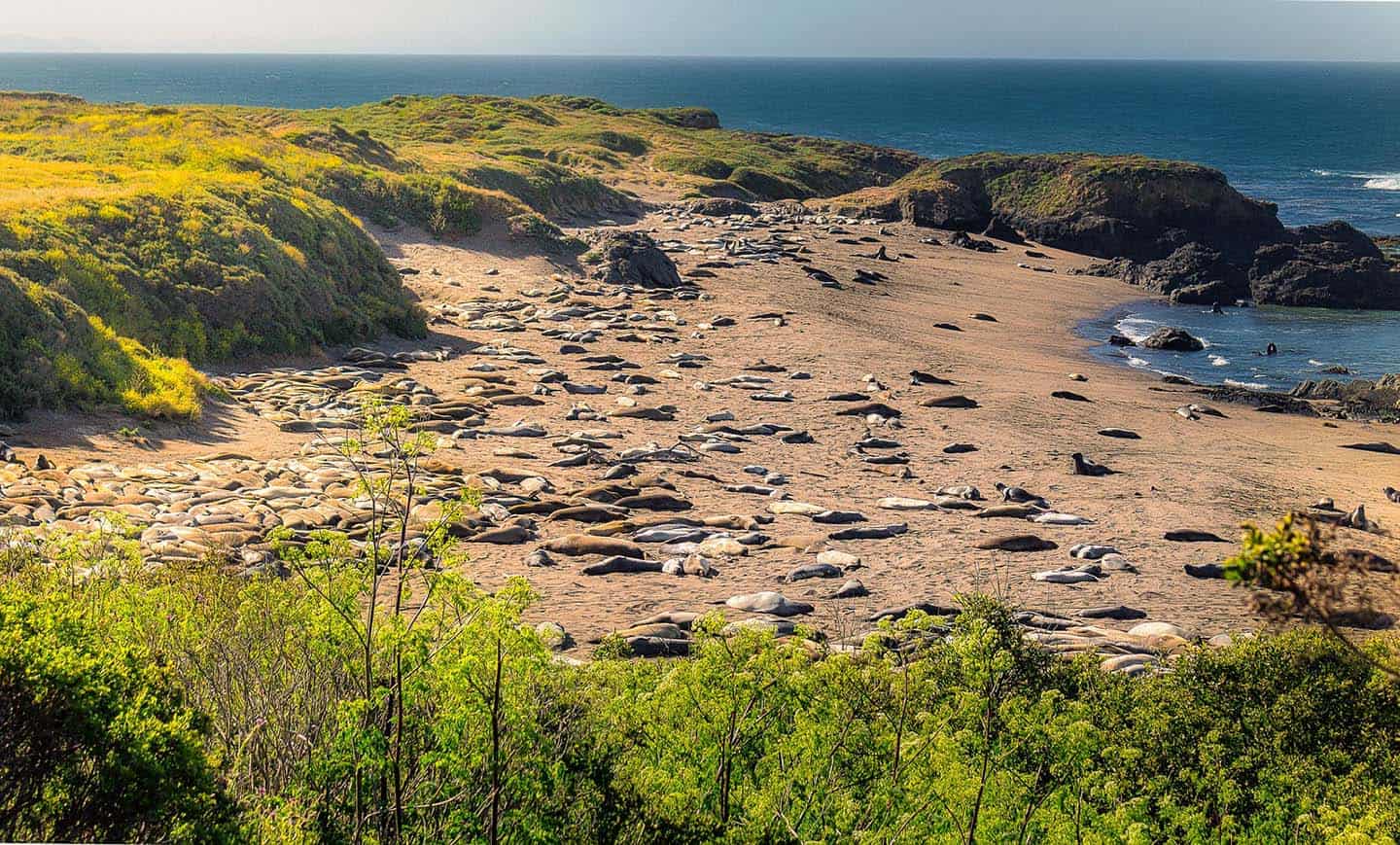
Elephant Seal Facts
The largest seal in the northern hemisphere, the Northern Elephant Seal migrates to the Piedras Blancas Elephant Seal Rookery twice each year. While offshore, the Elephant Seal spends 8-10 months diving up to 5,800 feet deep for up to two hours at a time. The remaining months of the year the animals are known to mate, birth, molt, and rest onshore between trips.
The Piedras Blancas Rookery hosts up to 24,000 Elephant Seals each year, from the baby Elephant Seal to the 5,000-pound adult male. Females weigh in at up to 1,800 pounds and pups are about 70 pounds at birth.
The name “Elephant Seal” comes from the size of the male animal’s nose, which resembles an elephant’s trunk. This bulbous nose, called a “proboscis,” impresses other males who compete for female attention during mating season. It also helps the males sound out loud calls before fighting or challenging another seal. A male’s proboscis starts growing at about five years and develops fully by nine years of age.
Like whalers, people hunted Elephant Seals on the Central Coast from the 18th to the 20th centuries. Using their blubber for oil nearly drove the Northern Elephant Seal to extinction. At one point, just one colony of 50 seals remained on Guadalupe Island, off the coast of Baja. With the invention of kerosene in 1846, and with Mexico’s protection of the species in 1922, Northern Elephant Seal numbers climbed. Today, scientists estimate their population to be 225,000 or more.
On land, the Northern Elephant Seal can be found between the Gulf of Alaska and Baja California. Interestingly, aside from newborns, Elephant Seals don’t eat or drink while ashore, and rarely breathe, to protect their energy. When they leave the rookery, these Elephant Seals often swim as far as 3,000 miles away, twice per year.
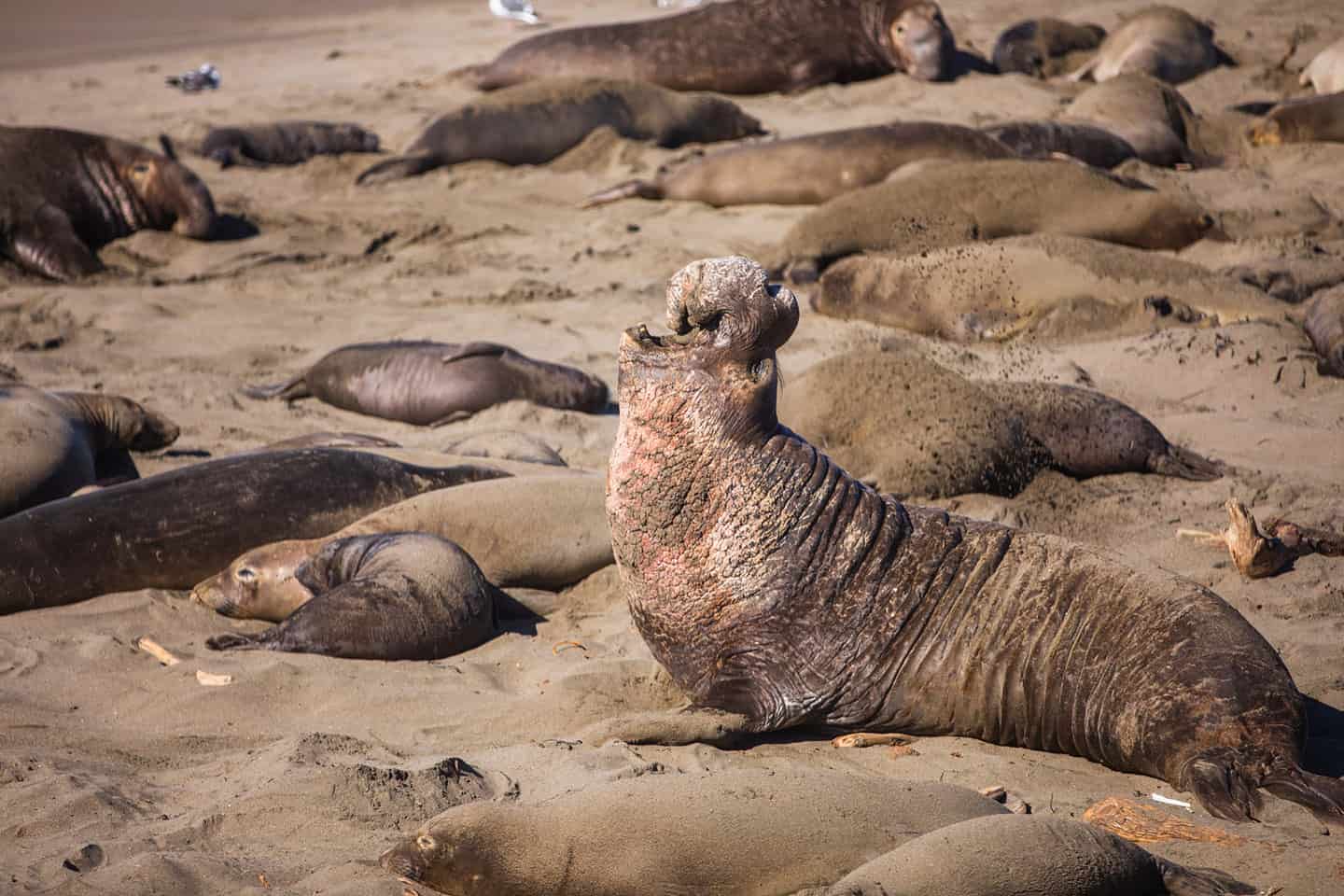
Elephant Seal Rookery Video
Elephant Seal Viewing Area
You’ll be amazed to see the Elephant Seals in their habitat, from a close but safe distance. The Piedras Blancas Elephant Seal Rookery sits just off Highway 1, seven miles north of San Simeon. Follow a flat, wheelchair-accessible path with a railing to witness their remarkable life cycle on the beach. See males challenge each other to an Elephant Seal fight, or witness the birth of an Elephant Seal baby. For information, check out one of many interpretive displays, or talk to a knowledgeable docent. Best of all? This attraction is completely free and open to the public, every day of the year.
Please note: Depending on the season, Piedras Blancas weather can be unpredictable. Bring sunscreen, comfortable shoes, and a jacket. Also note that the Elephant Seal Rookery does not offer restrooms. Lastly, please leave drones and model aircraft at home, as they are illegal at the rookery.
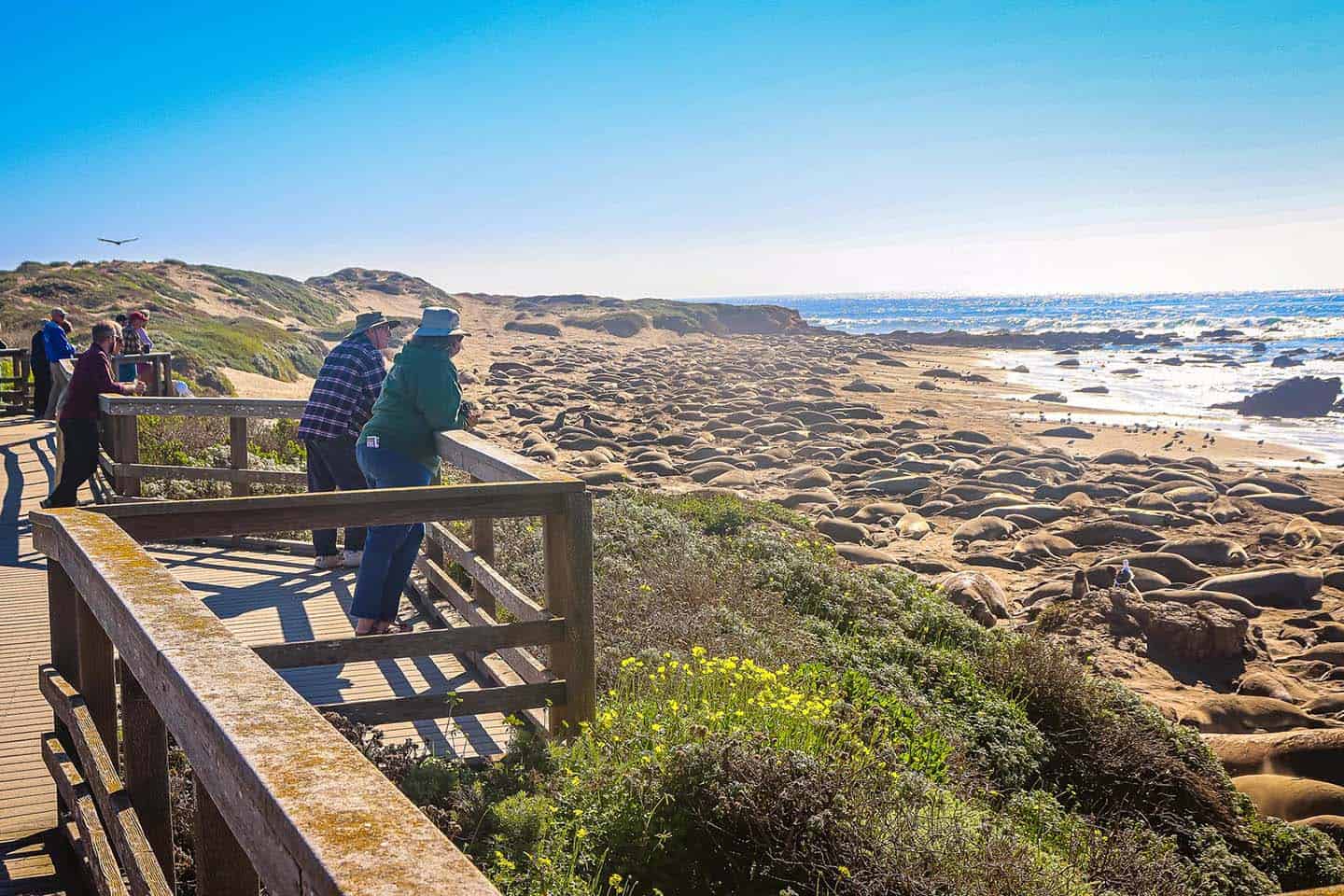
Parking on Highway 1
Enjoy ample free parking and easy accessibility to the Elephant Seal Rookery Viewing Area daily. If you’d like to enjoy a short hike as part of your viewing experience, simply park at the Boucher Trail Head North and traverse the Boucher Trail to the viewing area. Folks should note that the nearby Piedras Blancas Light Station is not connected to the Rookery and open for guided tours by appointment only.
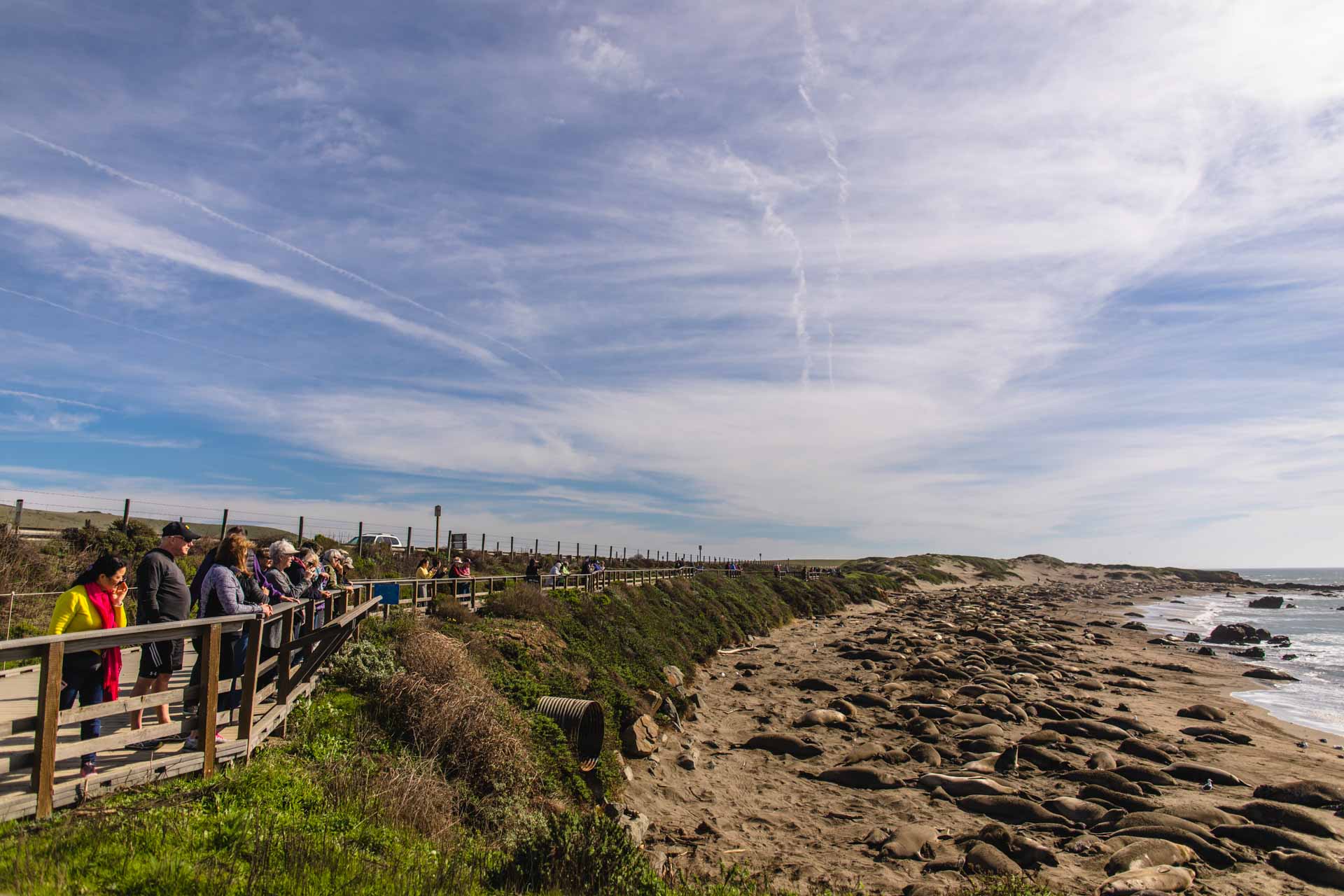
Elephant Seal Viewing Seasons
The best time to view Northern Elephant Seals at the San Simeon Piedras Blancas Elephant Seal Rookery is winter through spring. Head to the viewing area from December through March for incredible wildlife watching that unfolds right before your eyes. While Northern Elephant Seals haul out on beaches near San Simeon year round, different phases in the mammal’s life cycle bring additional activity and excitement. During peak viewing times, roughly 17,000 of these majestic creatures appear to mate, breed and birth along Highway 1.
Starting in November, adult male Elephant Seals arrive on shore with the sole mission of claiming female pupping areas on the sand. When another adult male challenges a pupping location, a fight for dominance ensues. Watching these enormous animals squabble for “Top Seal” is quite the spectacle, as male Elephant Seal bulls can reach 16 feet in length and weigh up to 5,000 pounds. Adult males tend to fight for mating rights from December through January, so keep an eye out for these dramatic displays of power.
From December through March, female Elephant Seals arrive on the beach to give birth. This is a magical time at the Rookery, indeed. Pregnant females begin to arrive in December with the majority of expecting mothers arriving in January. Folks should note that births typically occur at night. Viewing by day, you’ll witness a real life nature show on display: Pups are known to weigh about 60 pounds and can soar to as much as 300 pounds at weaning. During the last week of nursing (about 24 days), a female will mate with the alpha bull before splashing back into the sea. Pups are left alone to learn to swim and find food–a hard but necessary life lesson. It goes without saying, these animals are incredible to watch during this important time in their young lives. Most pups are ready to depart for the sea in March or April.
Molting Season offers up another exciting time to visit the Piedras Blancas Elephant Seal Rookery. Starting in April, females and juvenile Elephant Seals return to shore to molt–a dynamic process that causes the seals to shed their coat and gain a new, silver fur. The molting season lasts 4-6 weeks and most females and juveniles are back in the water by the end of May. In June, subadult and adult males arrive to begin their molt. By August, the males have mostly completed with their transformation. The shore has the least amount of animals in August, so be sure to mark your calendar for your next summer road trip along Highway 1.
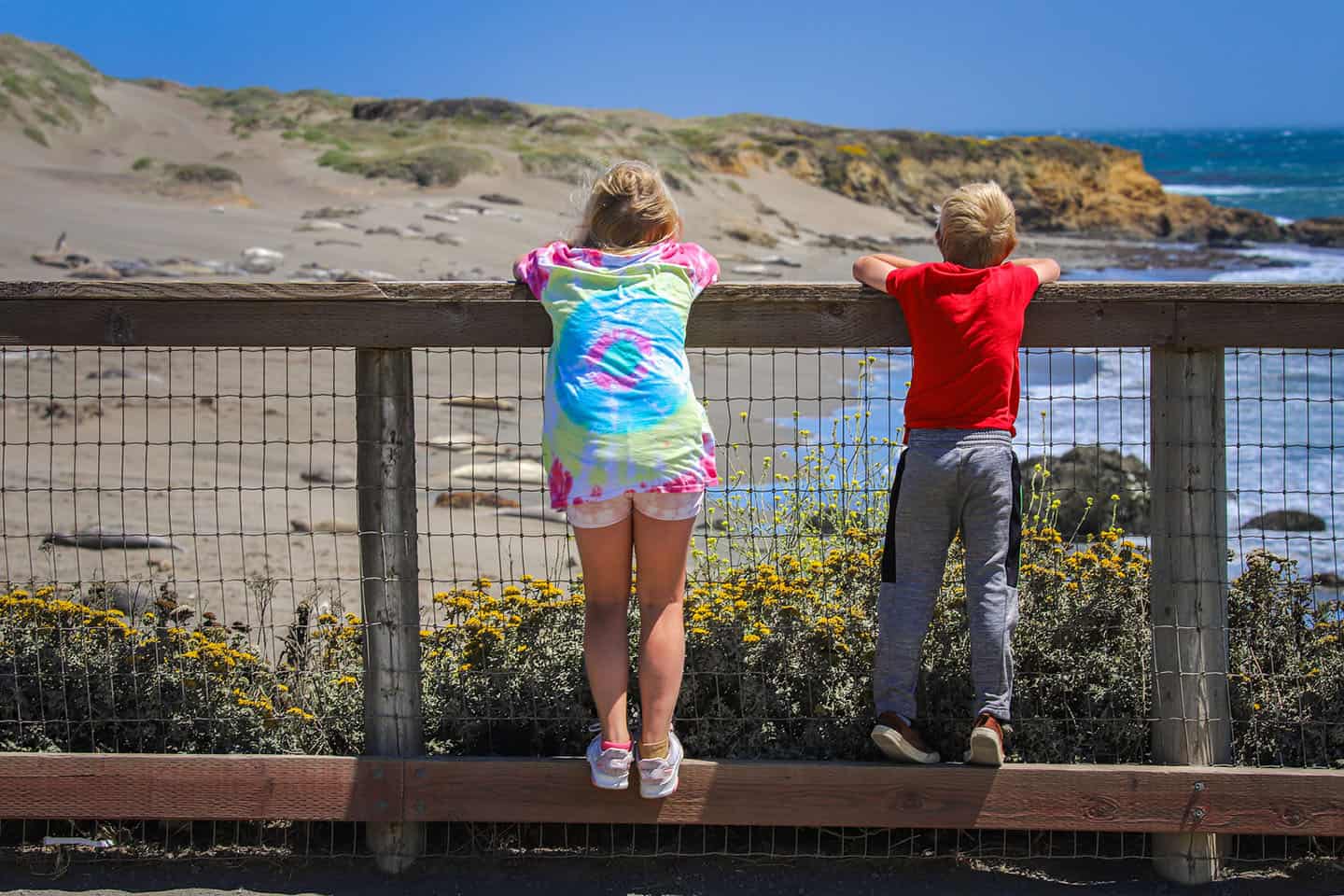
Piedras Blancas Friends of the Elephant Seal
The Piedras Blancas Light Station stands as a fitting backdrop for The Piedras Blancas Elephant Seal Rookery Viewing Area and Docent Station. This towering local landmark provides a glimpse to yesteryear, when lighthouses served a vital role in maritime navigation. Learn about this region’s rich seafaring heritage when you embark on an educational guided tour of the lighthouse, available for purchase from the light station. You’ll learn that the lighthouse–named for the distinctive white rocks that loom just offshore–was first illuminated in 1875. Plus, folks of all ages will discover the more than 70 native plant species found on the 19 acres surrounding the landmark. Tours are offered year-round at 9:45 a.m. and usually span 2 hours in length.
More info:
The Light Station is part of the federally designated Piedras Blancas Light Station Outstanding Natural Area and the California Coastal National Monument. The tower and some support buildings are listed on the National Register of Historic Places.
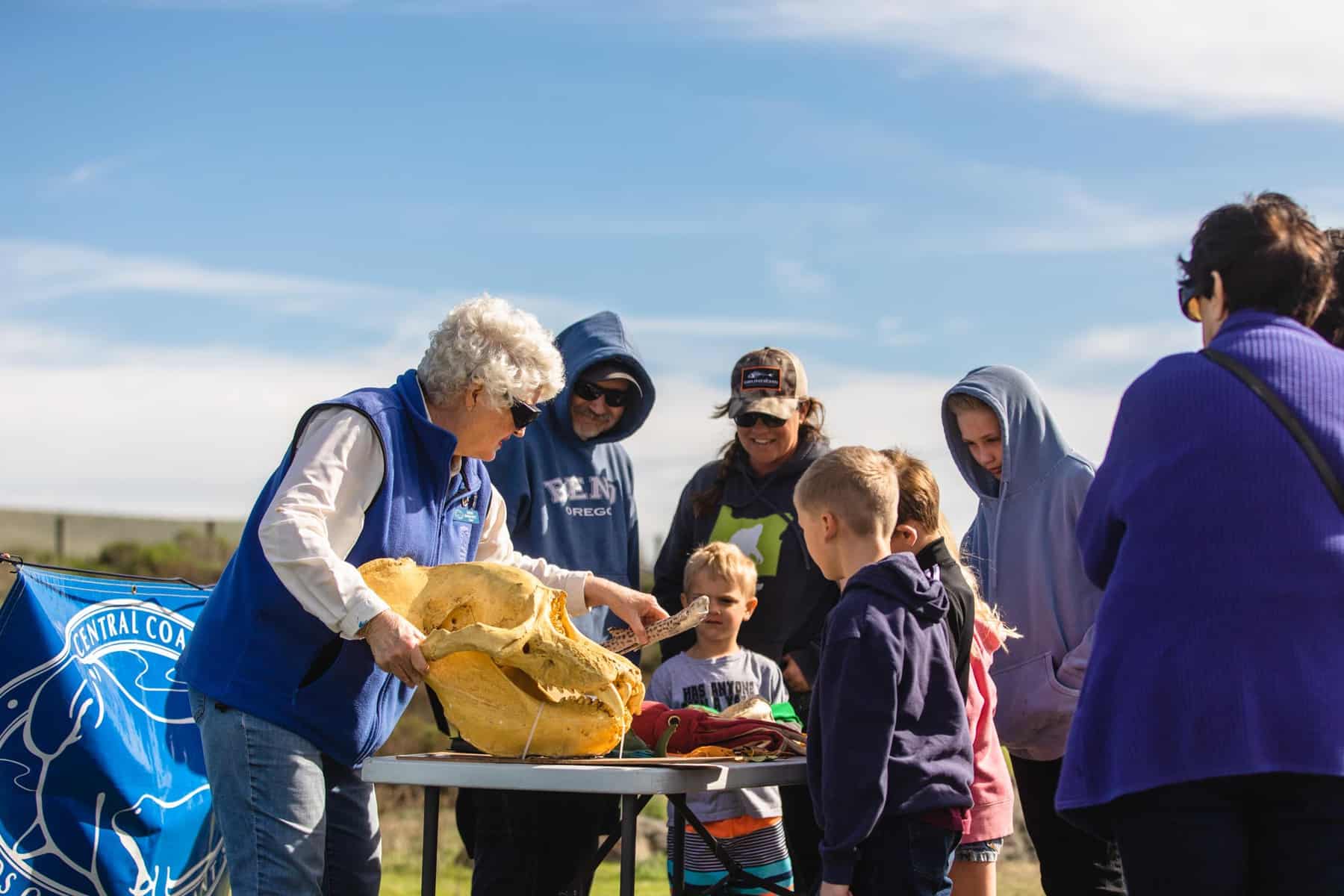
Elephant Seal Visitor Center
The Elephant Seal Visitor Center is your destination for connecting with San Simeon’s incredible Northern Elephant Seal population, the largest colony of its kind located in the mainland United States. Open daily from 10 a.m. to 4 p.m. this easily accessible center is committed to educating the public and ensuring that all walks of life are able to enjoy this iconic Highway 1 attraction. The newly expanded, 1,000-square-foot facility features informative exhibits, in-depth resources, educational programs, a gift shop stocked with unique souvenirs and a live steaming “Seal Cam” broadcasting from the Piedras Blancas Elephant Seal Rookery, located just 7.8 hours north of the center.
Looking to learn more about local Elephant Seal populations and their habitat, diet, anatomy and life cycle? Helpful Friends of the Seal Guides are always on-hand to field your questions, present exhibits and facilitate hands-on learning experiences for all ages. Guides are also available to lead visitors along the Boucher Trail, home to several remote Elephant Seal lookout points.
Stop by the Elephant Seal Visitor Center before or after your tour of the Piedras Blancas Elephant Seal Rookery and make the most out of your wildlife viewing experience along Highway 1. The Elephant Seal Visitor Center is located in the Cavalier complex at 250 San Simeon Avenue, Suite 5A.
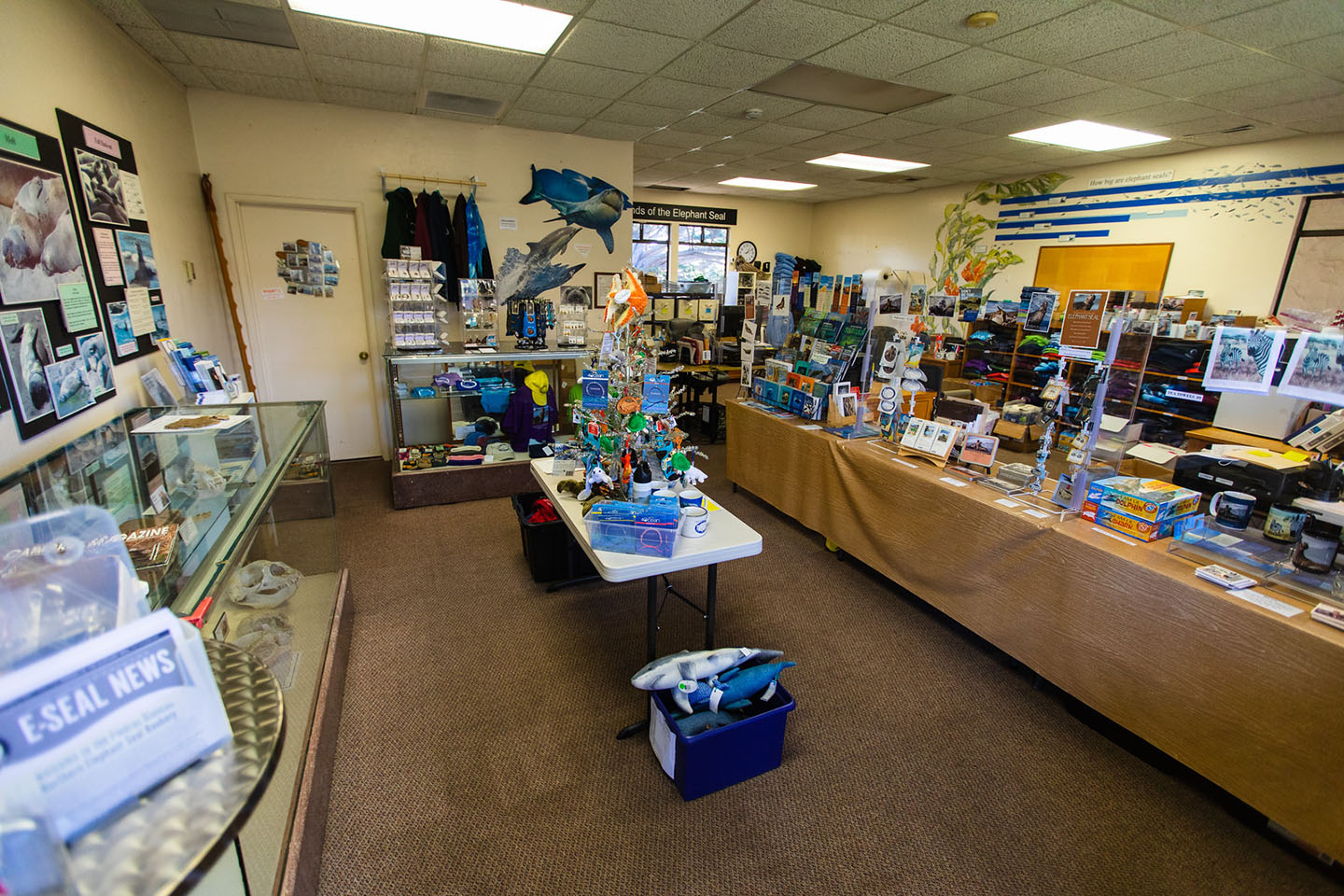
Elephant Seal FAQ
How fast do Elephant Seals Move?
Elephant Seals can move up to 5 miles per hour on land. Although not their preferred mode of transportation, Elephant Seals do use their fins as support to propel their bodies for short-distance travel. This can come in handy as the animals aim to return to water, catch up with a female or chase an intruder.
How fast do Elephant Seals swim?
Elephant Seals are capable of swimming at speeds up to 10 miles per hour, but usually travel more slowly to conserve energy.
How long do Elephant Seals live for?
Female Elephant Seals generally live for about 19 years, while male Elephant Seals live for about 13 years.
Are Elephant Seals larger than walruses?
Yes, Elephant Seals are larger than walruses! Elephant Seals are the biggest of pinnipeds, with the males ranging between 3,300-5,100 pounds and females clocking in at about 880-2,000 pounds.
How long can Elephant Seals hold their breath?
Elephant Seals can hold their breath for two hours. Male Elephant Seals can hold their breath for longer than almost any other mammal, diving beneath the waves for long periods without the need to surface for air.
Do Elephant Seals have any natural predators?
Great White Sharks and, less frequently, Orcas, are the Elephant Seal’s natural predators. These are the only sea creatures with teeth long and sharp enough to penetrate the seal’s thick skin.
What do Elephant Seals eat?
An Elephant Seals’ diet consists mostly of squid and fish, but they are also known to consume rays and sharks.
Where do the Seals go when they leave the rookery?
Elephant Seals live solitary lives at sea for 8-10 months of the year, spending 90 percent of their time deep underwater. They routinely dive 1,000 to 3,000 feet (300 to 900 meters), staying underwater an average of 25 minutes before returning to the surface to breathe for 2-3 minutes. However, individual seals have been known to dive to 5,800 feet and to stay down as long as 2 hours. This behavior continues 24 hours a day for periods of several months, uninterrupted by visits to land or longer periods on the surface.
More Wildlife Viewing Nearby
Zebras of Hearst Castle
While it may seem strange, approximately 100+ wild zebras roam the hillsides along Hearst Ranch on Highway 1 in San Simeon. Descendants of William Randolph Hearst’s famous heard, these exotic animals enjoy a happy life of coastal grazing and fresh, ocean air. Keep your eyes peeled as you drive by the Piedras Blancas Elephant Seal Rookery, as you just might spot a striped friend in the pasture nearby.
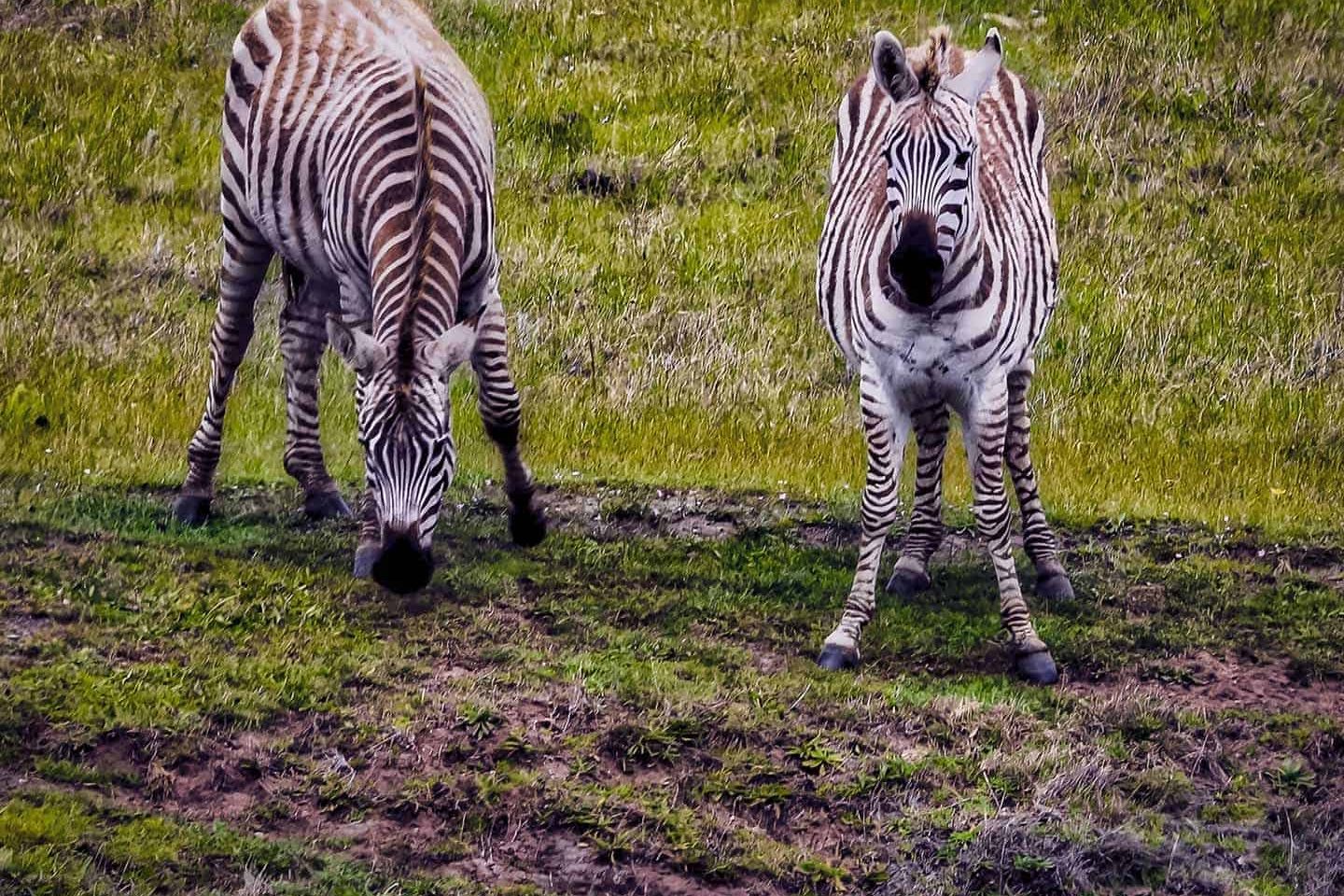
Coastal Discovery Center
Not far from the Piedras Blancas Elephant Seal Rookery, you’ll find the Coastal Discovery Center (CDC) of San Simeon Bay. Explore exhibits bringing to life San Simeon history, diverse marine life and the astounding beauty of coastal Highway 1 all in one dynamic family-friendly destination. Located at the base of the San Simeon Pier at WR Hearst Memorial State Beach, the whole family is welcome to enjoy this incredible resource.
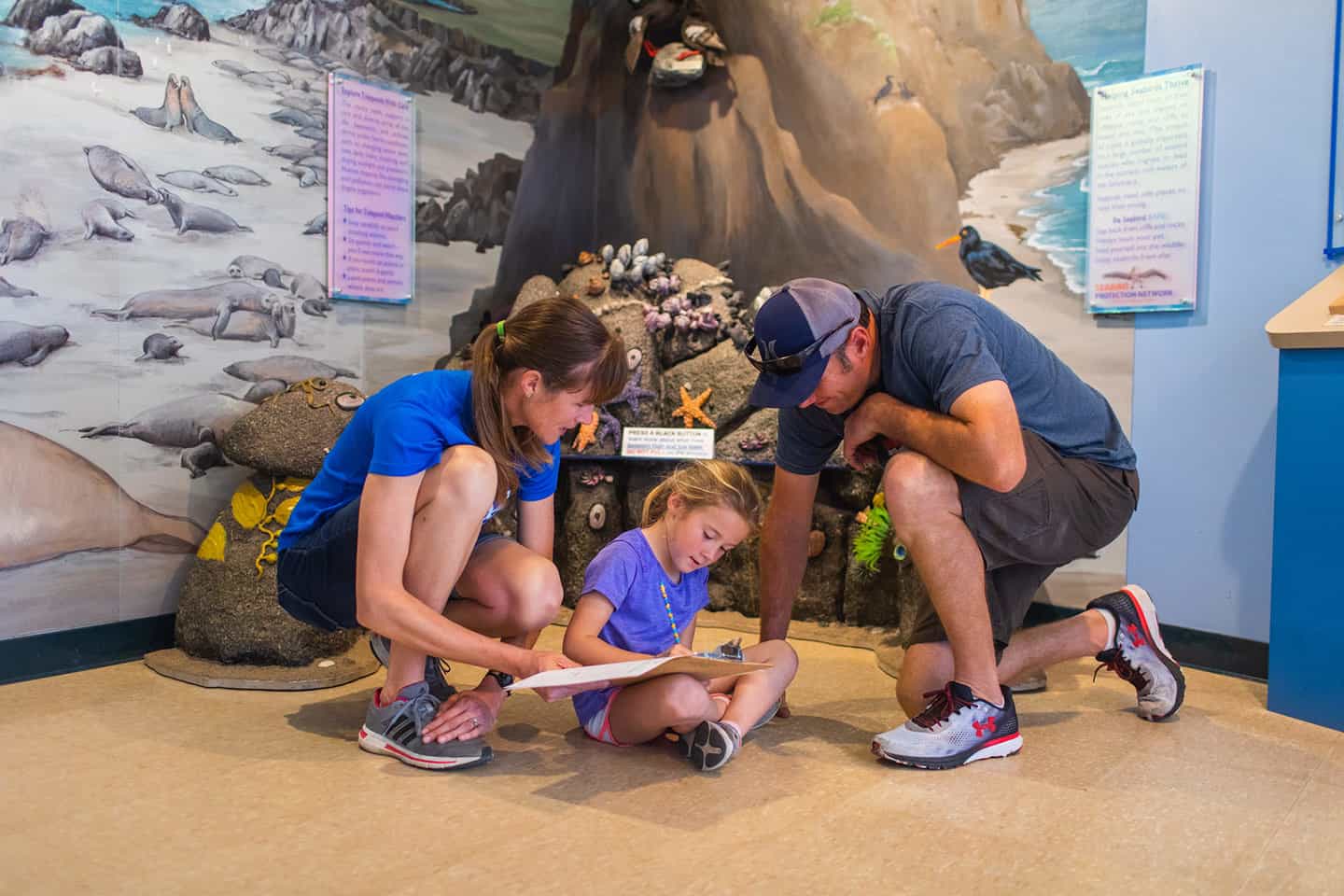
Whale Watching
You’ve seen the Elephant Seals—now it’s time to watch for whales. Highway 1 Road Trip’s Whale Trail features ten unique stops nestled along the coast. Look for the Whale Trail signs along your way for more information and handy viewing tips. Each stop is well positioned for catching sight of these majestic creatures, which make the bulk of their appearances December-May.

Bird Watching
Bird watching along Highway 1 is as easy as stepping outside and looking up. Home to dozens of fascinating seabirds and birds of prey, you’ll view everything from pelican sand herons to snowy egrets. A number of excellent birding areas can be found near Piedras Blancas Elephant Seal Rookery and all along Highway 1, including William Randolph Hearst Memorial State Beach.
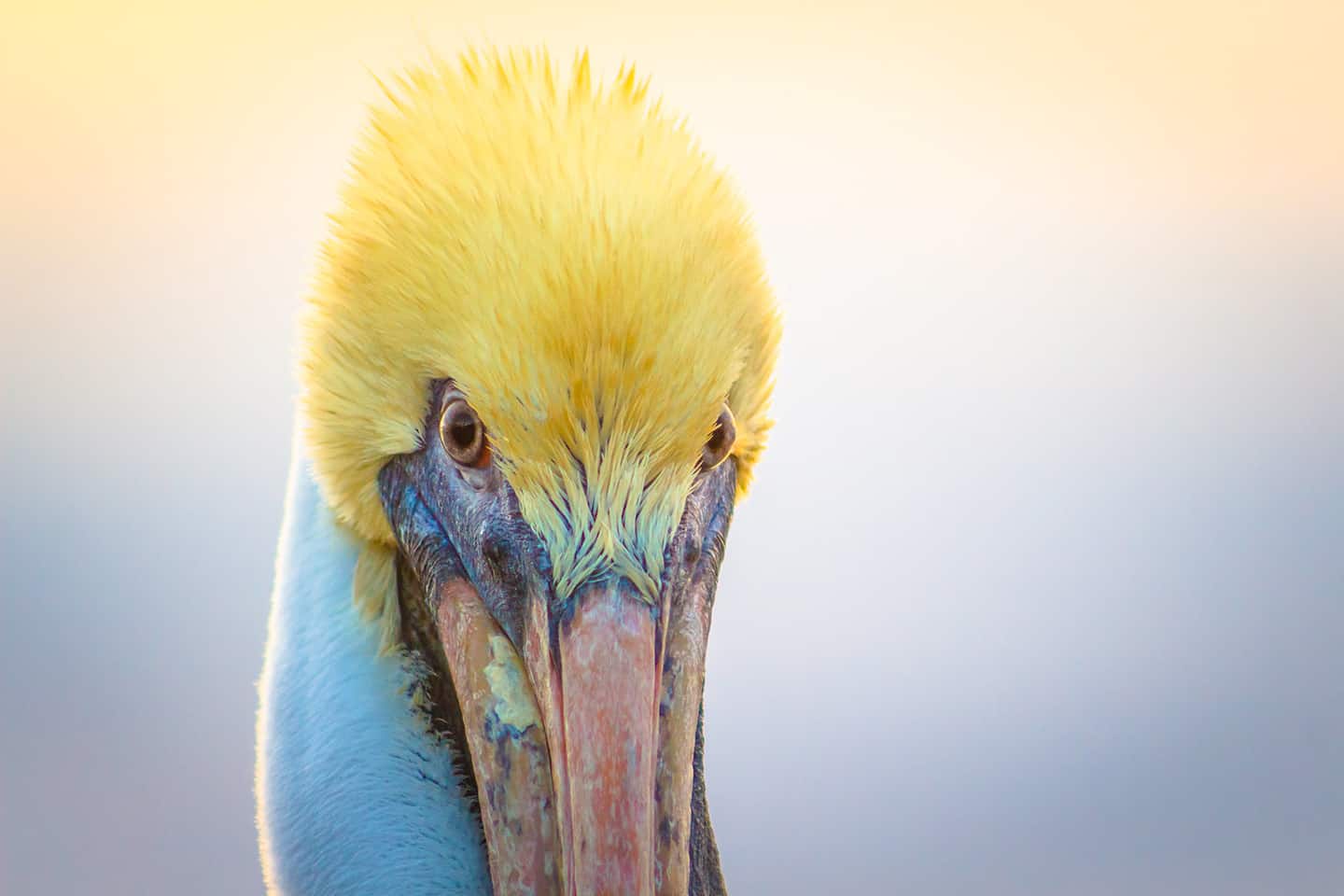
Otter Spotting
Fuzzy California Sea Otters can be spotted year round bobbing within the kelp forests found all along the Highway 1 and the Piedras Blancas Elephant Seal Rookery. Thanks to the Monterey Bay National Marine Sanctuary, these adorable creatures are able to enjoy sunny days lounging, frolicking and dining on fresh seafood.
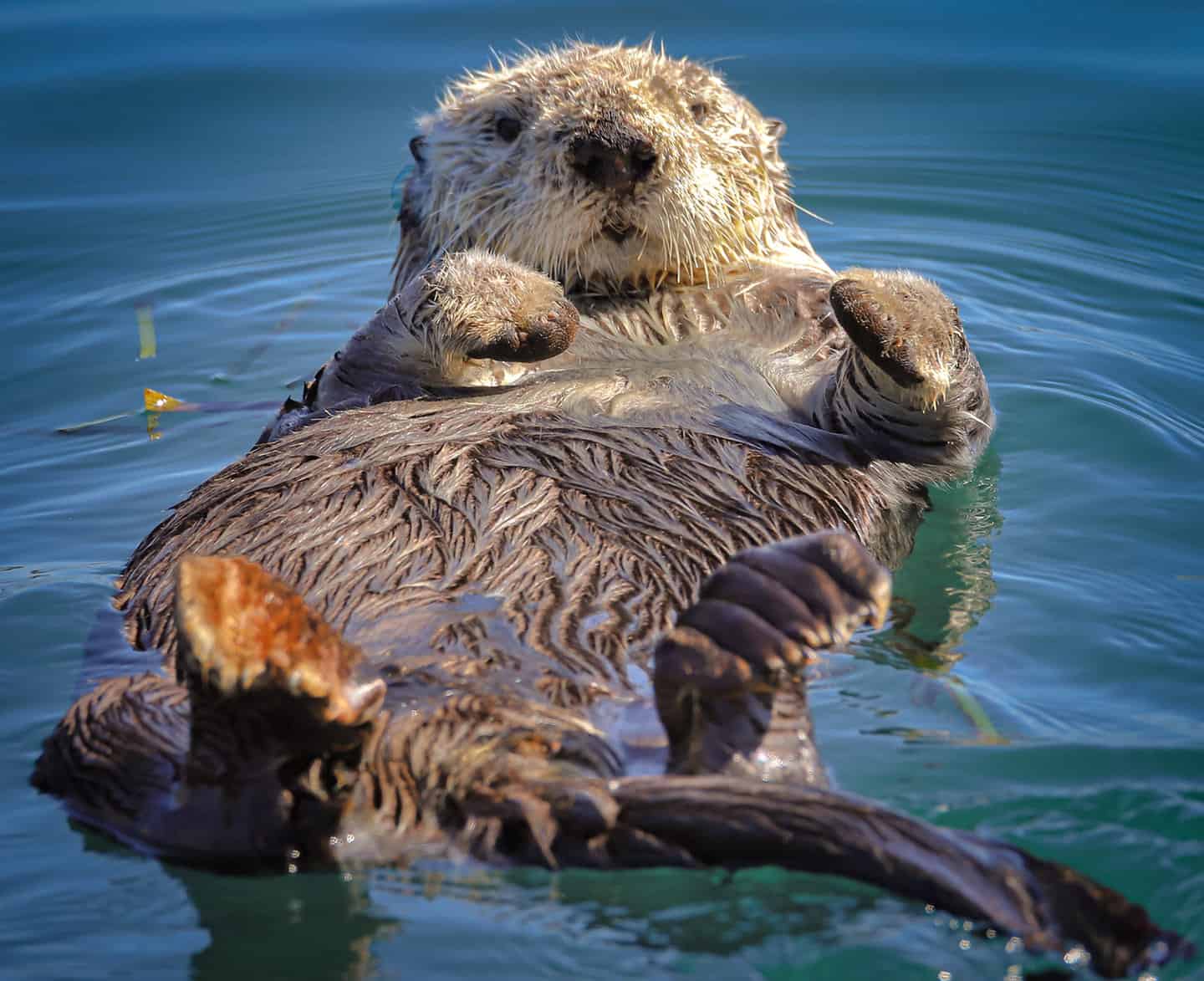
Where to Stay
Visiting the Piedras Blancas Elephant Seal Rookery comes with plenty of perks, including incredible places to stay and play. During your next visit, plan to check in to a range of scenic lodging options located along scenic Highway 1.
Ragged Point Inn (to the North)
Nestled on Highway 1 at the awe-inspiring Gateway to Big Sur, Ragged Point Inn is a cliffside resort like no other. Enjoy cliff-top rooms offering unobstructed vistas of the Big Sur Coast from perched atop a 350-foot summit. Home to an oceanfront restaurant, gift shop and unique photo opportunity that captures the magic of the Pacific and surrounding mountains, you’ll get an authentic slice of coastal California from the moment you arrive.
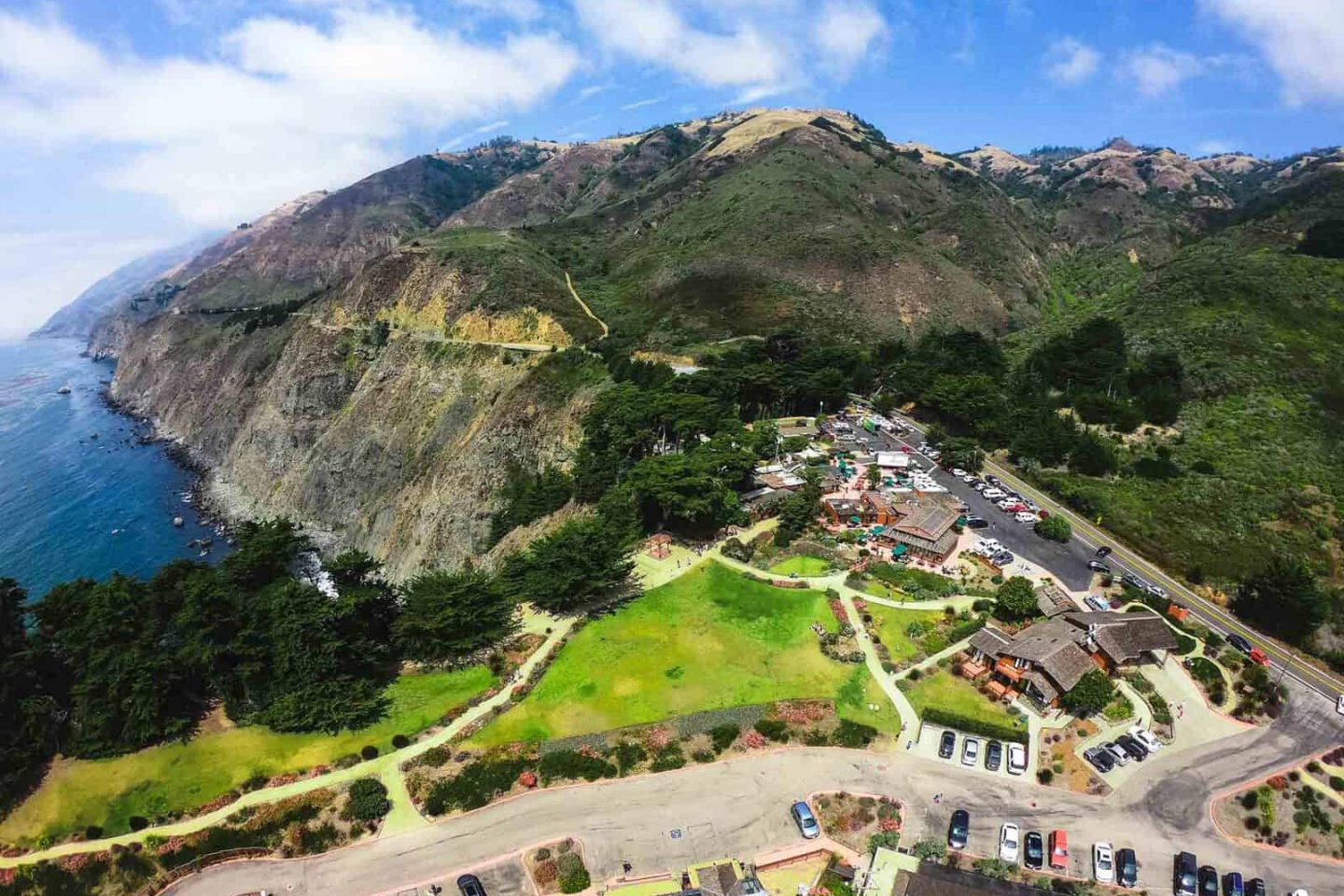
Cavalier Oceanfront Resort (in San Simeon)
Located along 900 feet of stunning San Simeon coastline, the Cavalier Oceanfront Resort in San Simeon will have you feeling like you’re rooming on top of the world. With 90 luxurious oceanfront rooms designed for a home-away-from-home experience (as well as an onsite spa), you won’t have any trouble getting into that golden state of mind.
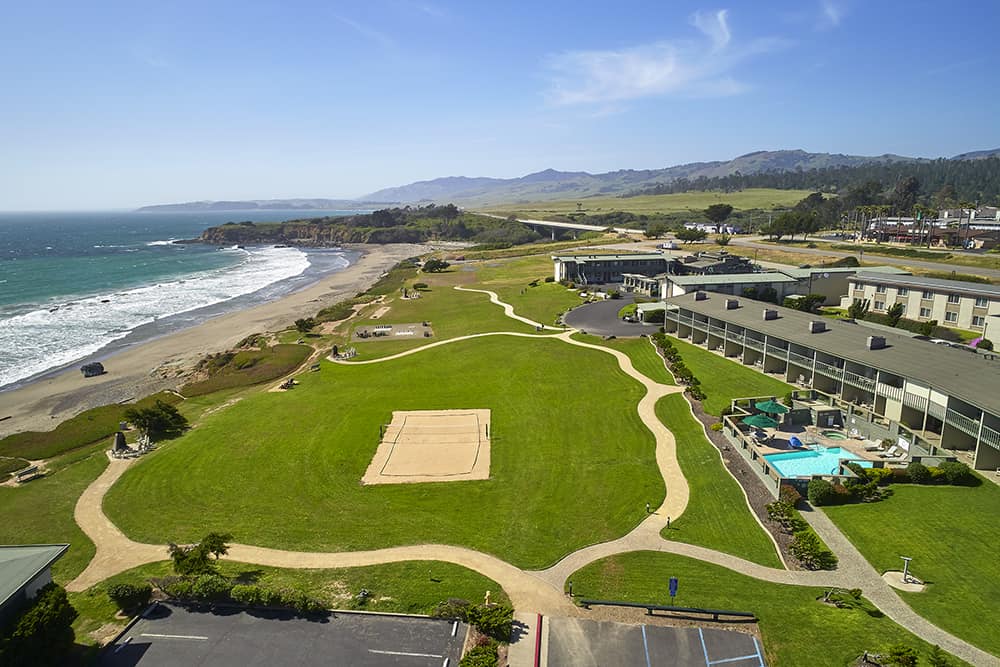
Moonstone Landing (in Cambria to the South)
Enjoy Cambria’s historic architecture, quaint shops, fine dining and art galleries when you check in at Moonstone Landing. This boutique beachfront property features rooms with full or partial ocean views, so you can savor a night in or head out for a night on the town. With amenities like fireplaces and jacuzzi tubs, it’s not always easy to decide!
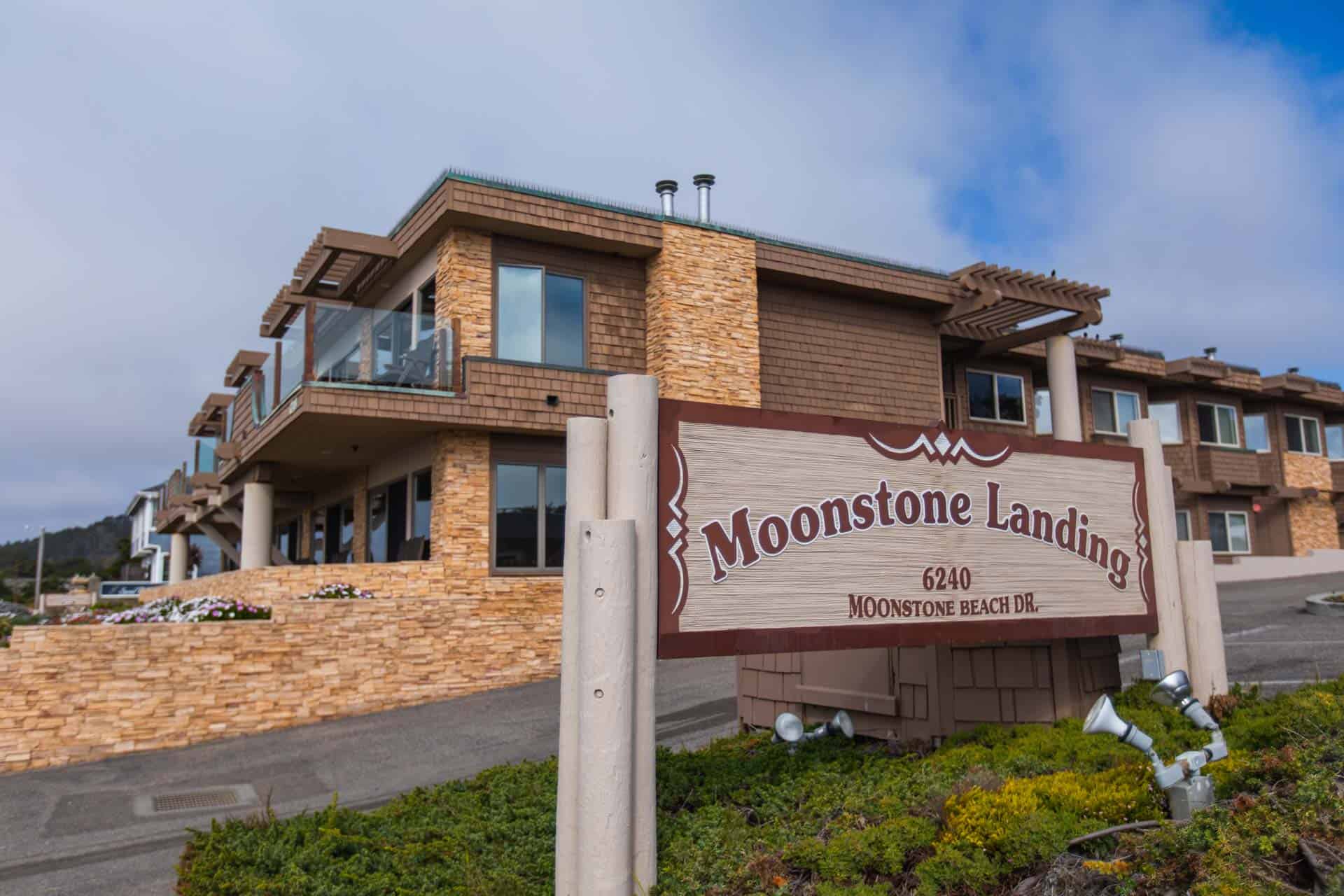
View our listings of all places to stay nearby the Piedras Blancas Elephant Seal Rookery!
Discover Elephant Seals along Highway 1
Elephant Seals abound along Highway 1. Don’t keep them waiting! Viewing these magnificent mammals backdropped by San Simeon’s scenic coastline is a truly once-in-a-lifetime experience for the whole family to enjoy. Plus, the experience is free and open to the public, year round. Be sure to read up on our wildlife viewing tips before you head to the Piedras Blancas Elephant Seal Rookery to ensure that this unique experience can be repeated again and again for generations to come.
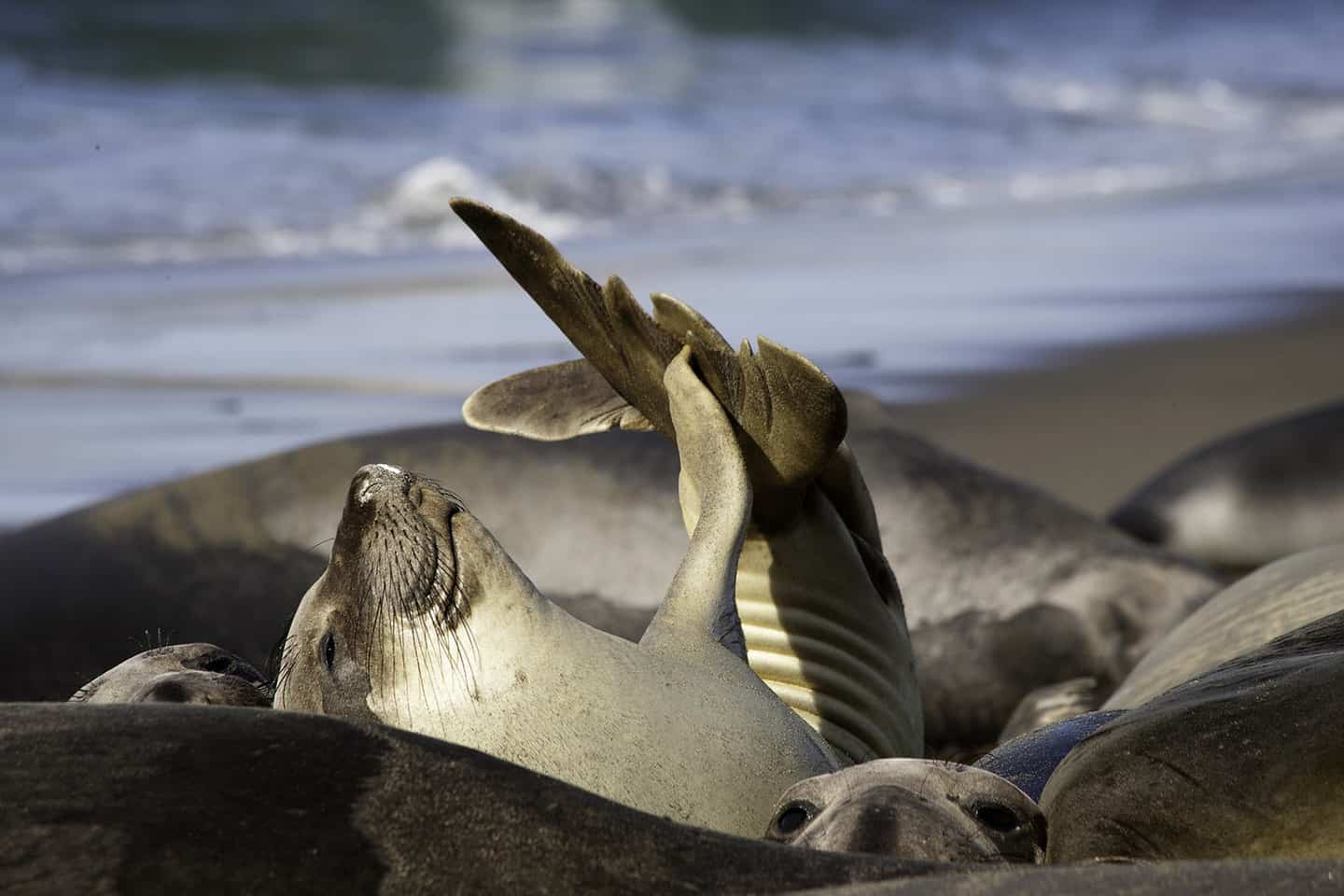
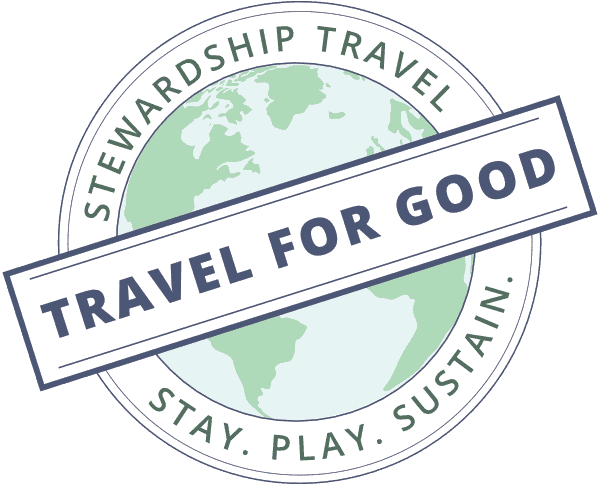
Stewardship travel for good
The Great Northern Elephant Seal Rookery outside San Simeon is one of the leading natural attractions along our stretch of Highway 1, and you can play a part in its preservation! Visit the rookery and take time to read the interpretive signs, then walk the viewing area to see these magnificent creatures in their natural habitat and connect with knowledgeable docents on site, every day of the year. To learn more visit the Piedras Blancas Friends of the Elephant Seal
Check out the Coastal Discovery Trail
learn more#PiedrasBlancasElephantSeals
Learn More About The Elephant Seals
Connect with San Simeon to enhance your visit to the elephant seals.




